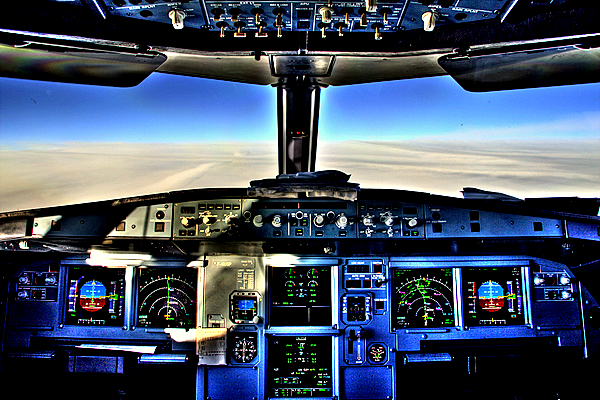
How cloud computing could help the aviation industry
 Cloud computing is the hottest trend in corporate computing right now and air transport companies should not be slow to grasp the opportunity. Airlines are constantly struggling with huge quantities of data in complex environments, and global staff require 24/7 access to data in order to keep ground and air operations running seamlessly. In an industry that reaches the globe and never sleeps, international commercial airlines need all the responsiveness and resiliency that they can get. What technology would be a better fit than cloud computing?
Cloud computing is the hottest trend in corporate computing right now and air transport companies should not be slow to grasp the opportunity. Airlines are constantly struggling with huge quantities of data in complex environments, and global staff require 24/7 access to data in order to keep ground and air operations running seamlessly. In an industry that reaches the globe and never sleeps, international commercial airlines need all the responsiveness and resiliency that they can get. What technology would be a better fit than cloud computing?
In my opinion, the cloud gives the aviation industry an opportunity to reinvent the way airline, redefine the way it works with its customers, and rewrite its relationship with all its stakeholders. So, here are some of the benefits cloud computing models can bring to aviation:
- Lower total cost of ownership (TCO) – When employing cloud services, airlines remove the need to buy and maintain on-premise servers and hardware, plus the corresponding team of IT personnel needed to manage them. This way, the administrative and maintenance overhead is reduced significantly.
- Reinvent the airline corporation – With cloud computing it is no longer necessary to consider trade-offs in choosing one technology over another – a variety of technologies and tools can be adopted simultaneously over a pay-by-use model, thus avoiding upfront purchases of expensive and infrequently used software. This enables the airline to provide its staff with access to powerful technologies anytime, anywhere.
- Scalability – Computing power can be adjusted within minutes in the cloud, according to actual needs, which fluctuate with rapidly-changing business demands.
- Fast implementation of apps and services – Instead of emailing instructions and updates to ticketing central agents, airlines can deliver critical information in real-time to a reservations app that runs continuously on their desktops or mobile devices. Cloud-based infrastructure also removes the need to purchase individual licenses for every workstation, which leads to lower costs and complexity.
- Redefine the customer engagement – The cloud allows airlines to engage with the customer and consumer directly on mobile and social channels anytime anywhere, and at a reduced cost. This direct connection between the service provider and service consumer can potentially build a rich and deep relationship that benefits both sides. The customer can choose to reveal more about his/her travel habits and preferences, while the airline can use this information to segment its target and tailor offerings more closely.
- Increased productivity – For those planning to provide ground-based employees with more flexible working arrangements, airlines can adopt cloud services to help them make the move to mobile working without the need to plan for or worry about the infrastructure.
The internet of flying things could help prevent air disasters
Even though cloud-computing could help advance the status of the black box in terms of the investigation after incidents like Air Asia flight QZ8501, nature often plays a significant role in airline disasters. But there is something we can do, on the ground, to lower the risk of these weather-related incidents.
Recently, Microsoft Research illustrated that combining real-time data from nearby flights, it is possible to predict the wind speed to an accuracy ten times better than the weather simulations by supercomputers. Augmenting the data collected from real-time sensors from the cloud, one can create a better simulation, thanks to the advances in the internet of flying things.
Actually, by equipping a drone or unmanned airborne vehicle (UAV) with a GoPro quality camera, enthusiastic fans can already survey the neighbourhood from the air. And if we look at the air crash incidents caused by bad weather conditions, wouldn’t be nice that this technology of cloud computing and augmented reality be used as a life saver?
Share your thoughts in the comments.
Photo Credit: https://www.flickr.com/photos/28479345@N06/2990785538/




